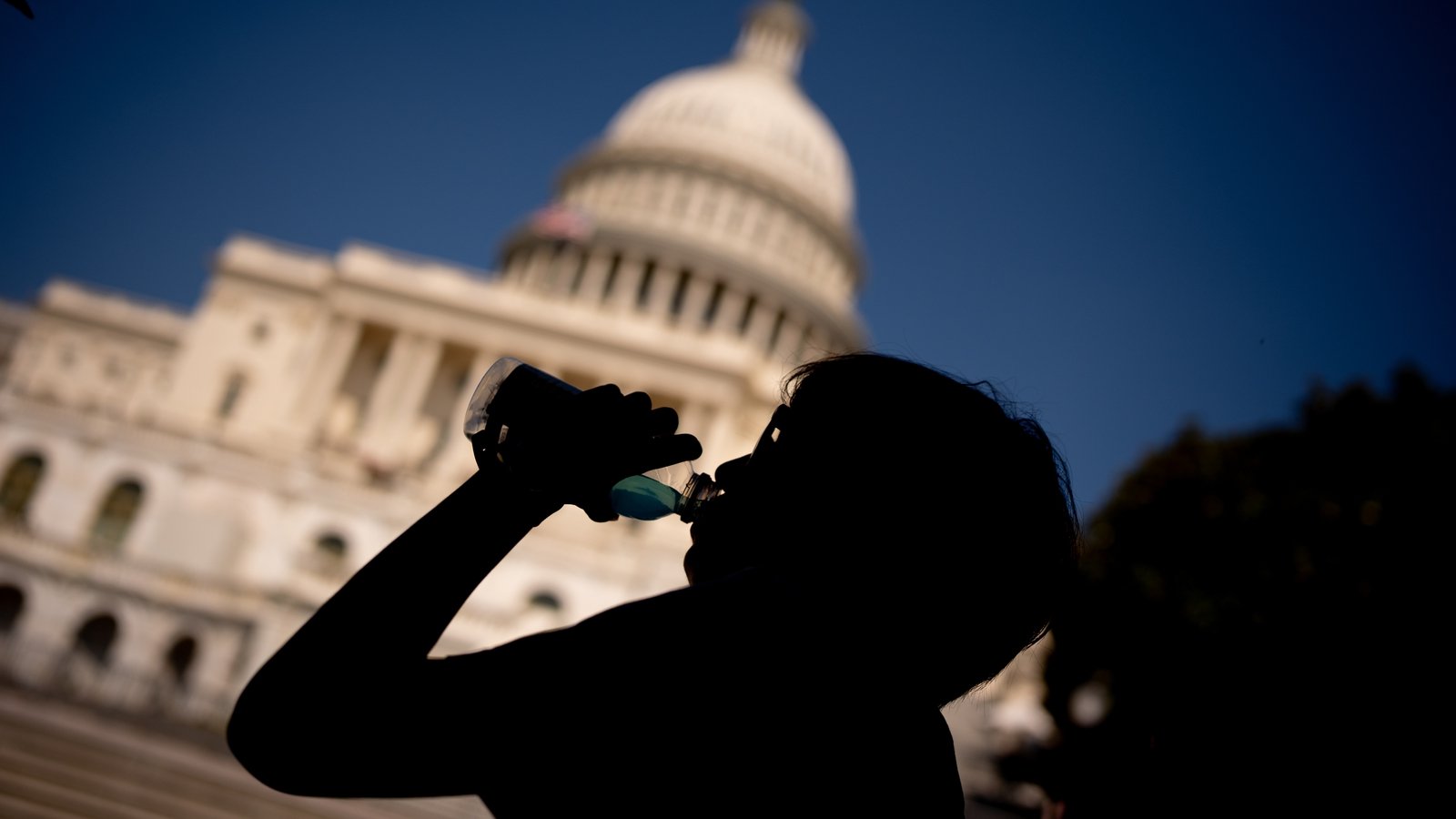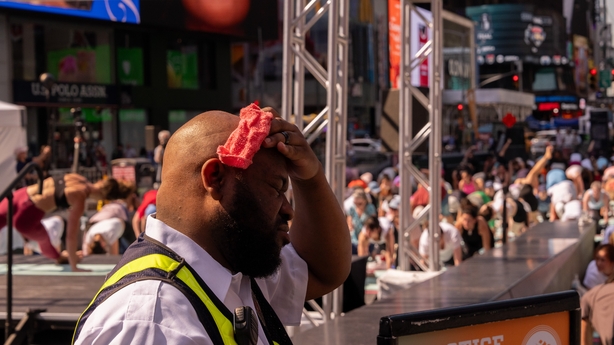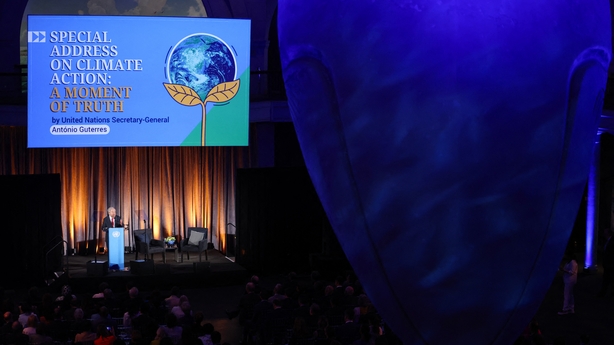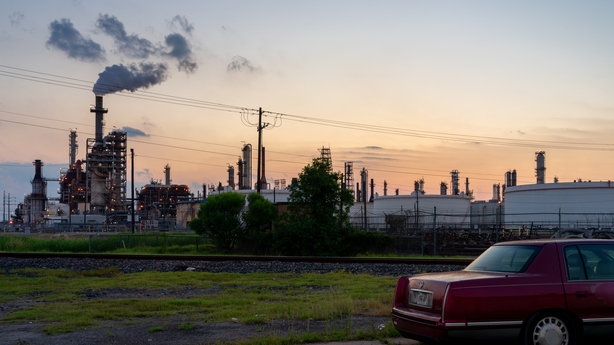America swelters, burns more dirty fuel to cool down

Tens of millions of Americans were under heat advisories this week as soaring temperatures broke records across the Midwest and Northeast of the country.
Further south Tropical Storm Alberto – the first of the season – brought flooding, and forecasters predicted a “hyperactive” hurricane season ahead due to warmer air.
A surge in demand for air conditioning to beat the heat nearly collapsed the electricity grid in some parts of the country, forcing heavily polluting “peaker plants” to be fired up to meet demand.
In Texas, the oil and gas industry reported record levels of fossil fuel production as temperatures soared.
“In a maddening loop, those emissions are contributing to more extreme weather events, which are straining our power grid,” said Vivian Yang, energy analyst at the Union of Concerned Scientists.
US officials warned it was only going to get hotter.
Urging residents to take precautions earlier this week, the governor of New York State Kathy Hochul said: “We must be conscious of the fact that heat is the number one cause of death for weather-related fatalities here in the United States.”
Excessive heat contributed to the deaths of more than 2,000 people in the US last year, the most in 45 years of record-keeping, according to the Centre for Disease Control and Prevention. Ms Hochul said she had activated the National Guard to assist with any heat-related emergencies.

The Heat Dome
This week’s sweltering conditions were caused by a “heat dome” where greenhouse gases trap hot air – and often pollution – in place for an extended period. The suns rays then continue to heat the trapped air.
Such high temperatures are unusual for this time of the year and the mayor of New York City Eric Adams warned residents to expect more higher temperatures as the summer goes on.
“This is extremely hot for June,” he told a news conference.
He said climate change was leading to “more frequent and intense heat,” and that summers were now different than they were before.
New York’s bout of extreme heat comes two weeks after the UN Secretary General António Guterres delivered a speech in the city Museum of Natural History, just off Central Park, in which he warned that the world was playing “Russian roulette with our planet”.
“We need an exit ramp off the highway to climate hell, and the truth is we have control of the wheel” he said.
In what has become something of a mantra, Mr Guterres poured scorn on the oil and gas industry, calling energy conglomerates “the godfathers of climate chaos”.

But in America, “the godfathers” are powerful and have a champion in would-be president Donald Trump, who often describes his energy policy as “drill, baby, drill.”
The US lags behind
The United States is one of the leading emitters of greenhouse gases, second only to China.
But China’s investment in renewable energy has been booming for more than a decade, turbocharged by a centralised government bid for national self-reliance.
The Chinese economy will remain powered by polluting fuels for some time to come – coal-fired power stations are still being built.
But wind and solar capacity is set to outstrip coal production for the first time this year.
In 2023, China installed more solar power than the entire world commissioned in the previous year, according to a report by the International Energy Agency.
Some observers have dubbed this China’s “authoritarian advantage” – an ability to push through large-scale, state-sponsored projects quickly, without concern for local opposition or democratic processes.
China has also successfully cornered the market in lithium processing – an essential component for cleaner energy sources.
The United States is playing catch-up.
US president Joe Biden’s signature green deal, the Inflation Reduction Act, passed in 2022, which offered tax cuts and green investment incentives, was seen as a massive boost to the US clean energy sector.
But it was less ambitious than intended, because of opposition from political opponents and the fossil fuel industry, Kristina Dahl, principal climate scientist at the Union of Concerned Scientists told RTÉ News.
“While [the Inflation Reduction Act] was the biggest piece of climate legislation that we’ve ever had, it’s important to recognise too that it was watered down in order to become passable,” she said.
Because the US was late to the game on renewables, time is running out for the energy transition, if the US is to meet its emissions targets, she said.
“Ideally, we would not still be within the transition at this point, this would have happened decades ago, when we first recognized that it was needed,” Dr Dahl said.
Still, many obstacles remain.
The United States only recently expanded its natural gas extraction infrastructure, which produces planet-warming methane.
Industry leaders and politicians are reluctant to dismantle a sector that supports thousands of jobs and local economies.
“Places like Wyoming and Dakota have really seen a fracking boom over the last couple of decades,” Dr Dahl said.
“That’s led to an expansion of jobs and so the idea of closing down those plants or transitioning to solar is one that has real world impacts for the people who work in those industries,” she said.
These are the people who made sure that our lights were kept on, she said, “they can’t just be discarded as the as we plunge into a future with solar and wind”.

Renewables energy projects have also fallen foul of misinformation, according to Jacob Elkin of the Sabin Centre for climate change law at New York’s Columbia University, regarding the human health impacts of these projects, such as electromagnetic fields or dangerous chemical runoff.
“Those are not real risks from these projects, but there’s still a lot of misinformation about it,” he said.
Despite all this, wind and solar output has been growing in the United States and is beginning to compete with dirtier power sources on price.
“Solar and onshore wind are the two cheapest forms of utility-scale energy in the United States,” Mr Elkin told RTÉ News.
“I think if we can overcome some of these local obstacles, the market is right for really significant growth of these industries, regardless of the power of the fossil fuel industry,” he said.
As renewable energy gets cheaper – and the weather gets hotter – it seems attitudes among American consumers are shifting too.
A UN-backed report released this week, showed that 54% of Americans surveyed favoured a quick transition away from fossil fuels.
Red light for the green transition
But prominent Republican politicians have pushed back on Mr Biden’s green legislation.
The governor of Florida Ron DeSantis introduced a law to ban offshore wind turbines and boost protections for the natural gas industry.
Mr DeSantis said the bill, which will come into effect on July 1st, rejected the agenda of “radical green zealots”.
Critics say policies like these are out of step with the public who are feeling the effects of climate change and want the government to step up.
“There’s still a contingent in the US that really does not accept the science that humans are causing climate change or that climate change is real or that we need to be doing anything about it,” Kristina Dahl said.
“But over time, we’ve seen that contingent grow smaller and smaller as more and more people understand what’s happening because they’re seeing it and they’re feeling it in their own lives,” she said.
Nevertheless, the small contingent can still be “dangerous,” she said.
Mr DeSantis has endorsed former president Trump for re-election. Mr Trump has repeatedly dismissed climate change science as a “hoax” and vowed to cancel Mr Biden’s green agenda if he takes back the White House.
Climate scientists fear that a change in administration this November, could further slow America’s energy transition, knocking the country way off target for emissions reductions.
“I think the question is, do we build enough renewable energy infrastructure in time to avoid the worst impacts of climate change,” said Mr Elkin.
“And that’s a question that I don’t have an answer to,” he said.





